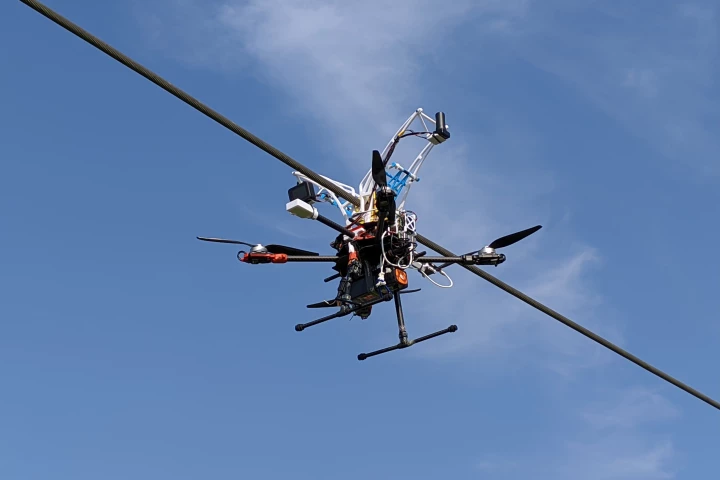University of Southern Denmark
-
Seaweed washing onto sandy shores does more than rot. A new study found that it fuels oxygen-tolerant microorganisms that pump methane into the air, overturning a long-held scientific assumption about coastal ecosystems and their climate role.
-
Hitting a plateau after a steady run of weight loss has derailed many health and fitness plans. But what if you could flick a biological switch to nix plateaus and speed up metabolism? Scientists may have found the key – and it was by complete accident.
-
Tycho Brahe is best known as a Danish Renaissance astronomer. But he was also a bit of an alchemist, and a first-ever analysis on shards found at his former home from the 1500s has shed some light on just what he was up to in his basement lab.
-
Battery life wouldn't be an issue for drones if they could just recharge on power lines as needed. That's exactly what an experimental new quadcopter can now do, allowing it to stay aloft pretty much indefinitely.
-
Danish scientists have developed an origami snake robot that could one day search for survivors at disaster sites, or even explore other planets. The device moves via rectilinear locomotion, just like real snakes often do.
-
If you've ever listened to death metal rock or Mongolian throat singing, you'll be familiar with the growling vocals that are part of both. Well, bats make similar sounds, and it turns out that they do so in the same manner as human singers.
-
It's already a well-known fact that on average, women live longer than men. A European study now indicates that the difference between male and female lifespans is even more pronounced in other types of mammals.
-
The jellyfish has experienced a population explosion in recent years, to the point that they sometimes have to be culled. It seems like a waste to just dump them, though. With that in mind, a scientist has developed a method of turning them into a potato chip-like food.
-
Scientists have developed a fluorescent material they claim can more reliably detect explosives in the vicinity, by being a bit more selective about when it changes color.
-
Scientists from the University of Southern Denmark have created a substance that is able to absorb and store oxygen in such high concentrations that just one bucketful is enough to remove all of the oxygen in a room. The stored oxygen is able to be released in a controlled manner when it is needed.
-
Researchers at the University of Southern Denmark have published the findings of a study on a non-invasive method for early diagnosis of stomach ulcers. The method utilizes synthetic molecules that react with the bacteria which causes ulcers, producing a green light in the stomach as a result.










